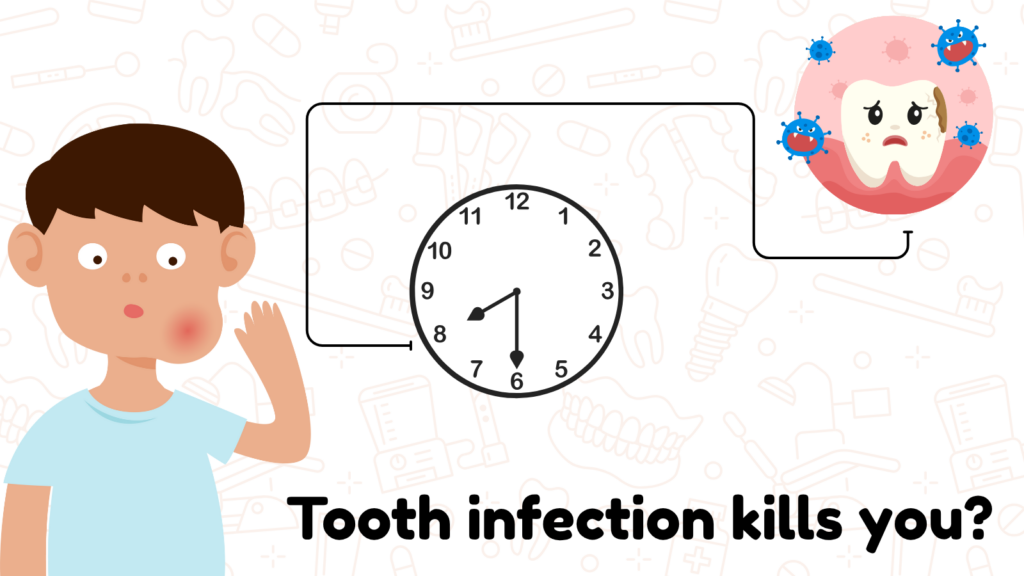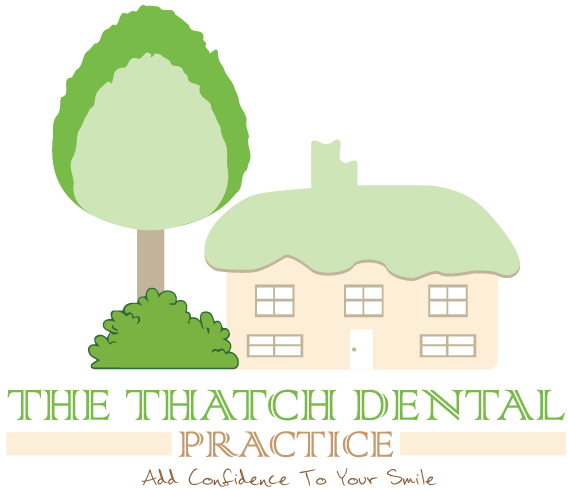
PROBLEM: It’s Just a Toothache … Right?
You awaken with discomfort in your jaw. It might have been developing gradually or struck suddenly overnight. You dismiss it as a simple toothache, take some pain medication, and go about your day, considering it just another minor annoyance.
However, this seemingly insignificant dental issue could be a warning sign of a more serious condition.
The truth is, a tooth infection isn’t limited to oral discomfort, facial swelling, or discharge. If left untreated, it can rapidly evolve into a life-threatening situation.
Many people mistakenly believe that a dental infection remains confined to the mouth. In reality, if the infection enters the bloodstream or spreads to surrounding tissues, it can cause severe damage to your organs, disrupt bodily functions, and potentially be fatal.
This isn’t an exaggeration or a scare tactic. These are genuine cases with real people experiencing severe consequences.
So, the question arises: How quickly can a tooth infection become life-threatening?
AGITATE: Ticking Time Bomb in Your Mouth
That’s because what makes tooth infections dangerous is that they don’t always appear all that urgent in the beginning. The symptoms appear manageable — a sore tooth, low-grade fever, swollen gums. Easy to ignore if you’re busy, broke or simply don’t love the dentist.
But this is where they start to go downhill — sometimes very, very quickly.
Science of Tooth Infections
Let’s break it down. A tooth infection generally begins when bacteria get into an area of a tooth known as the pulp — the center of the tooth that contains connective tissue, nerves and blood vessels. This can happen after an injury to the tooth or if the cavity is left untreated. If the infection goes untreated, it could become a dental abscess — a pocket of pus that can form because of the immune system’s attempt to contain the infection.
That abscess isn’t only gross — it poses a threat. And the infection can spread out of the tooth and into the jaw, neck, brain or bloodstream.
This is where we get into:
Ludwig’s Angina: A deep neck infection that might obstruct airways, resulting in suffocation.
Sepsis: A life-threatening condition in which the body’s response to infection damages its own tissues and organs.
Endocarditis: Infection of the lining of the heart, typically with bacteria that spread from the mouth.
Case 1: Kyle Willis — Case Study of Viral Awakening
His case is reminiscent of that of Kyle Willis, a 24-year-old single father in Ohio, who in 2011 developed a toothache. Uninsured, like many people, he couldn’t afford treatment. When the pain became unbearable, he sought help in the emergency room.
Doctors had given him painkillers — but no antibiotics.
The infection spread. It reached his brain.
Two weeks later, he was dead.
Read that again: A man died of a tooth infection that was not treated correctly. Not in the 1800s. In 2011.
Case Study 2: Vadim Kondratyuk -The Cross-Country Tragedy
It was 2017, and Vadim Kondratyuk, a 26-year-old truck driver from California, was on the first leg of a long haul when he felt a slight pain in his tooth. He pulled into a dentist in Oklahoma, who cleaned the infected area and prescribed antibiotics.
But the infection had already taken hold.
By the time he arrived in New York, he was in so much pain his brother had to take him home. He was hospitalized and died two days later. The virus had infected his lungs and other organs.
Again — young, healthy and gone in days.
How Fast Can It Happen?
Death can happen relatively quickly, in days or even hours, if the infection spreads rapidly and is inadequately treated. Here is how it tends to go:
Day 1-3: Localized toothache, inflammed, low fever.
Days 3–7: Abscess develops; the area around the face becomes more swollen; fever increases.
Day 7+: Infection can start traveling through the tissue around the the throat and the bloodstream — causing sepsis, infection of the brain (meningitis) or suffocation caused by the airway getting blocked.
There is no magic number of showers at which it becomes fatal — your immune system, your access to health care, and how quickly the bacteria spread, among other factors, do matter.
But the fact is, people have died within 24 to 72 hours after the systemic symptoms started.
And you still think a toothache can wait?
SOLUTION: Here’s What You Need to Do — Now
The good news? Tooth infections are absolutely treatable — if you move fast.
PART 1: KNOW THE WARNINGS.history, Step 1: Know the Warning Signs
Here’s what you can never forget:
Throbbing tooth pain
Facial, jaw, or neck swelling
Sensitivity to heat or cold
Fever
Swollen lymph nodes
Bad taste in mouth or pus
Trouble breathing or swallowing (call 911!)
If you have these symptoms, particularly if they occur in combination — stop reading this article and visit a doctor or dentist at once.
Step 2: Seek Treatment Early
The sooner you catch a tooth infection, the simpler (and cheaper) to fix.
Standard treatments include:
Antibiotics: To prevent the infection from spreading.
Root Canal: To eliminate infected pulp and preserve the tooth.
Extraction: If the tooth is too damaged.
Surgical Drainage (large or deep abscesses).
Not treating hurts, but it also raises both risk and cost.
Step 3: Cost Should Not Be a Death Sentence
Cost drives millions of people to postpone dental care. That’s real. But there are options:
Community Health Clinics: Many provide dental care on a sliding scale.
Dental Schools:May offer treatment by supervised students at reduced prices.
Payment Plans Most dentist will make arrangements with you — just ask.
Emergency Rooms: They can start antibiotics and take down swelling – they won’t fix the tooth though.
There’s always a way. What does not exist is a safe way to wait.
4: An Ounce of Prevention Is Cheaper Than a Pound of Treatment
There are plenty of fatal infections that begin with preventable problems — cavities, gum disease, a chipped filling. Frequent cleanings and checkups prevent those developments from getting out of control.
And here’s a harsh fact: If you brush and floss every day, but you haven’t seen a dentist in three years , you are not safe.
Step 5: Act Fast — Every Time
Indeed, if you’ve had a toothache in the past and it “went away,” that doesn’t mean the infection was defeated. It may have gone underground — and emerge stronger.
When in doubt, check it out.
It’s not worth your life to roll the dice on a maybe.
Wrapping It Up: Let’s Be Real
Tooth infections are not only agonizing — they can be deadly. They can spread quickly, close crucial systems and kill healthy adults in days.
We are not here to scare the living daylights out of you. We’re here to wake you up.
And if you’re reading this with a swollen jaw popping Advil every four hours and putting off dealing with it “next week” — don’t. This isn’t a time to be macho. It’s a time to be smart.
Quick Recap:
Yes, a tooth infection can kill you (really!).
In some situations, death can come within 24 to 72 hours.
Warning signs include pain, swelling, fever, and difficulty swallowing or breathing.
Early treatment saves lives.
The barriers may be steep, but so are the solutions.
Don’t wait. Act now.
Your mouth is not some isolated body part; it is the gateway to your entire being. And when something in there goes awry, it can wreak havoc on everything else.
So the next time someone does a dismissive wave and says, “It’s just a toothache,” you can feel secure in the knowledge that it really is not just a toothache. And, ideally, you will do better — for yourself or someone you care about.







